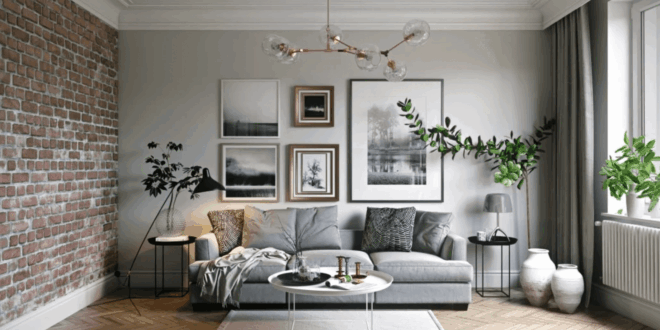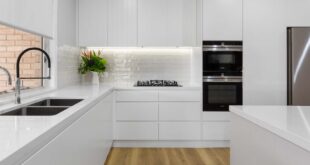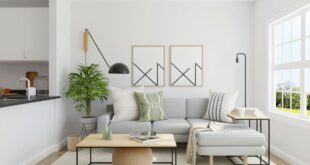Unleash Your Inner Artist: A Deep Dive into Interior Paint Ideas
Painting the interior of your home is more than just slapping on a fresh coat of color. It’s a transformative process, a chance to inject your personality, create ambiance, and breathe new life into your living spaces. Whether you’re aiming for a cozy sanctuary, a vibrant social hub, or a sophisticated retreat, the right interior paint ideas can make all the difference. In this comprehensive guide, we’ll explore a wide spectrum of color palettes, techniques, and inspiration to help you embark on your next painting project with confidence and style.
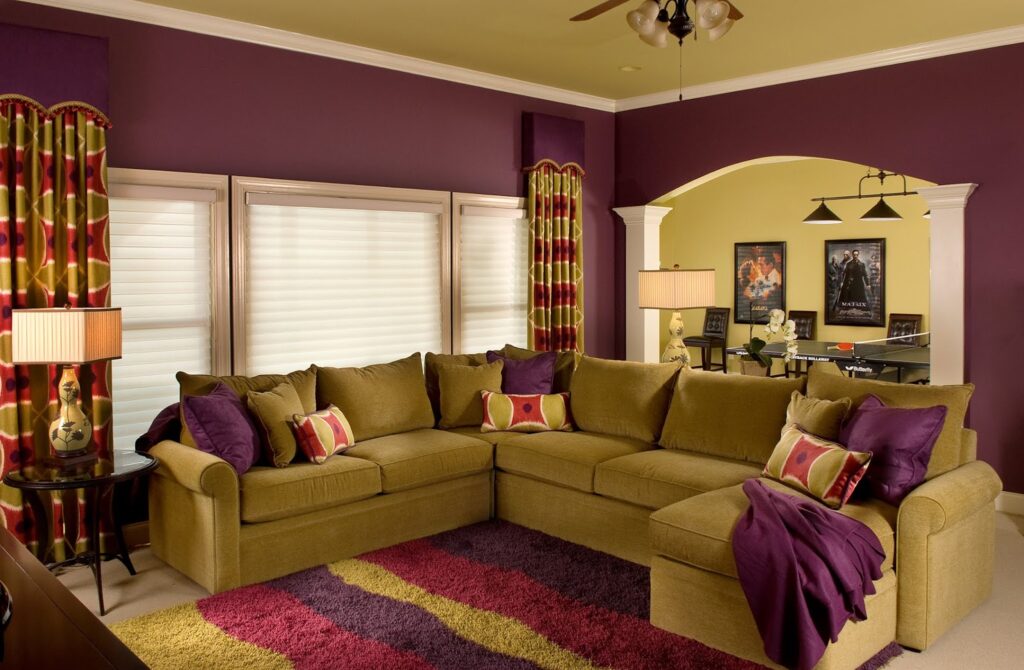
Understanding the Psychology of Color: Choosing the Right Hue for Your Mood
Before diving into specific color trends, it’s essential to understand the psychological impact of different hues. Color can influence our moods, energy levels, and even our appetites. Consider the function of each room and the feeling you want to evoke before making your final paint selections.
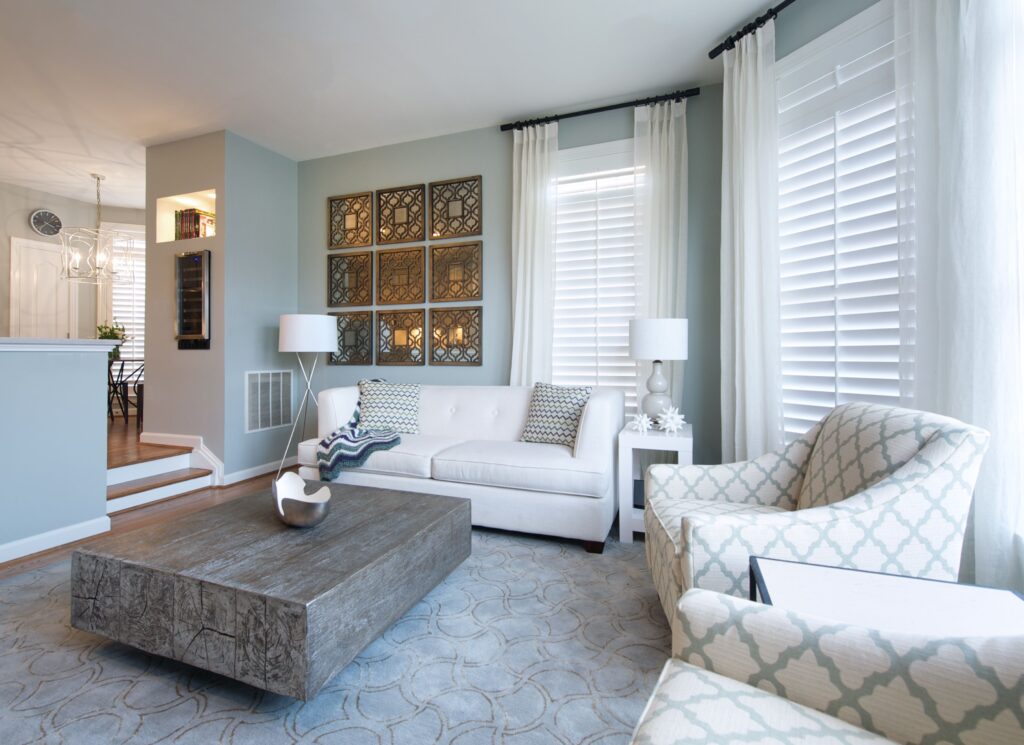
Warm Colors: Inviting and Energetic
Warm colors like red, orange, and yellow tend to be associated with energy, excitement, and comfort. These colors can create a sense of warmth and intimacy, making them ideal for living rooms, dining rooms, and even kitchens. However, use them judiciously, as too much warm color can feel overwhelming or even agitating. Think of a cozy fireplace glow in the living room with red undertones or a sunny yellow kitchen that instantly brightens your morning.
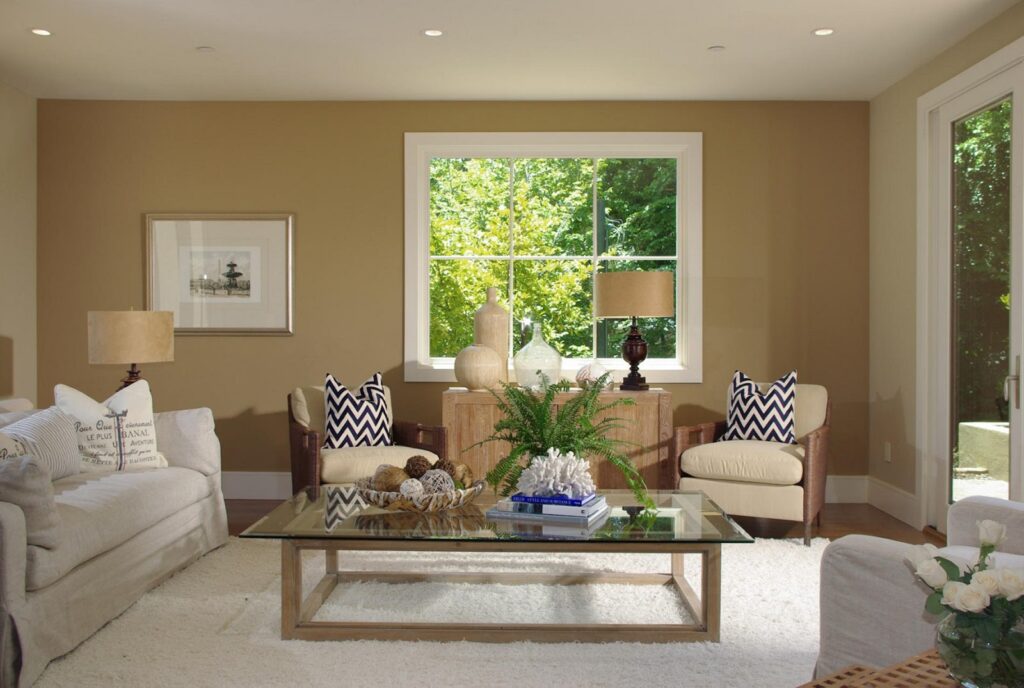
Cool Colors: Calming and Serene
Cool colors such as blue, green, and purple evoke feelings of calmness, serenity, and relaxation. These colors are perfect for bedrooms, bathrooms, and home offices where you want to create a peaceful and focused environment. Light blues and greens can make a small room feel larger and airier. Imagine a soothing blue bedroom that promotes restful sleep or a refreshing green bathroom that brings the outdoors in.
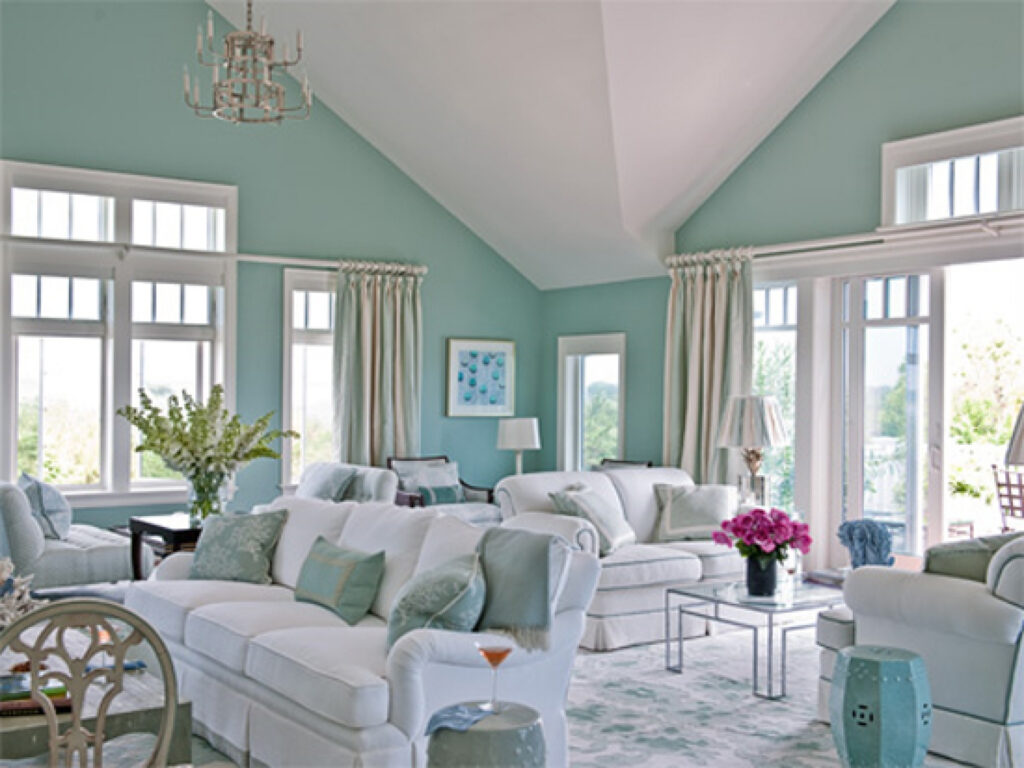
Neutral Colors: Versatile and Timeless
Neutral colors, including white, gray, beige, and cream, offer a versatile and timeless backdrop for any interior design style. These colors are excellent for creating a clean and sophisticated look and can be easily paired with bolder accent colors. Neutrals are also a great choice for hallways and entryways, as they provide a welcoming and uncluttered feel. A classic gray living room with pops of color through artwork and accessories is always a stylish choice. They provide a blank canvas for your imagination!
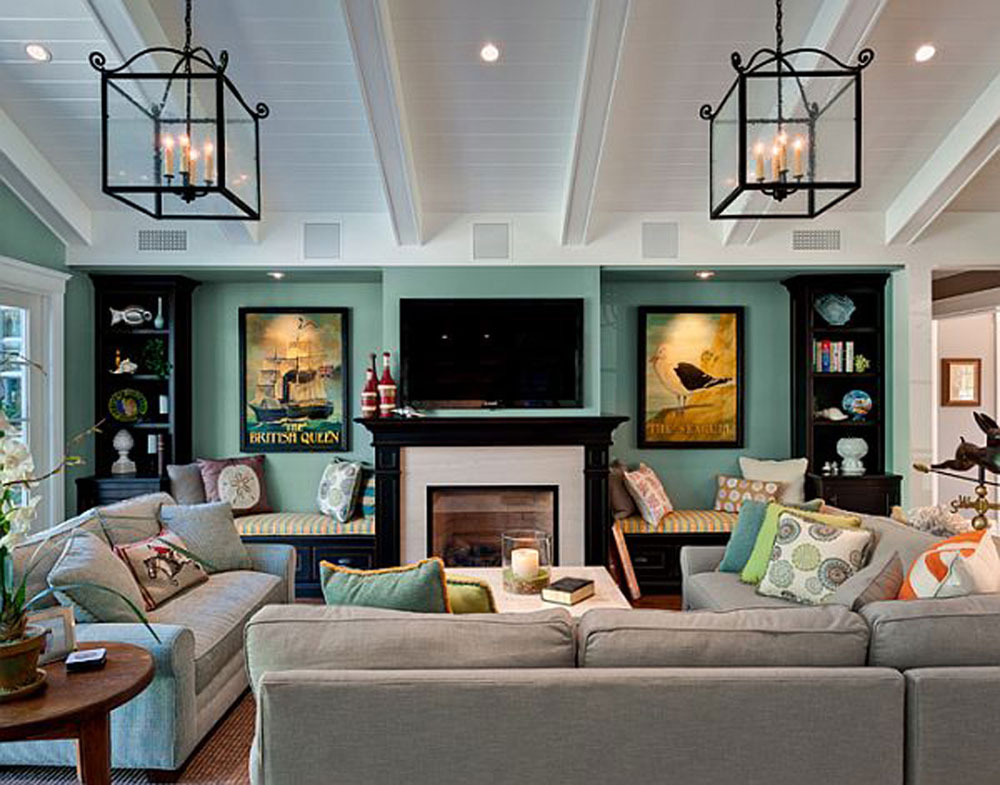
Beyond the Brush: Exploring Different Paint Finishes
The type of paint finish you choose can significantly impact the overall look and feel of your space. Different finishes offer varying levels of sheen, durability, and washability. Here’s a breakdown of the most common interior paint finishes:
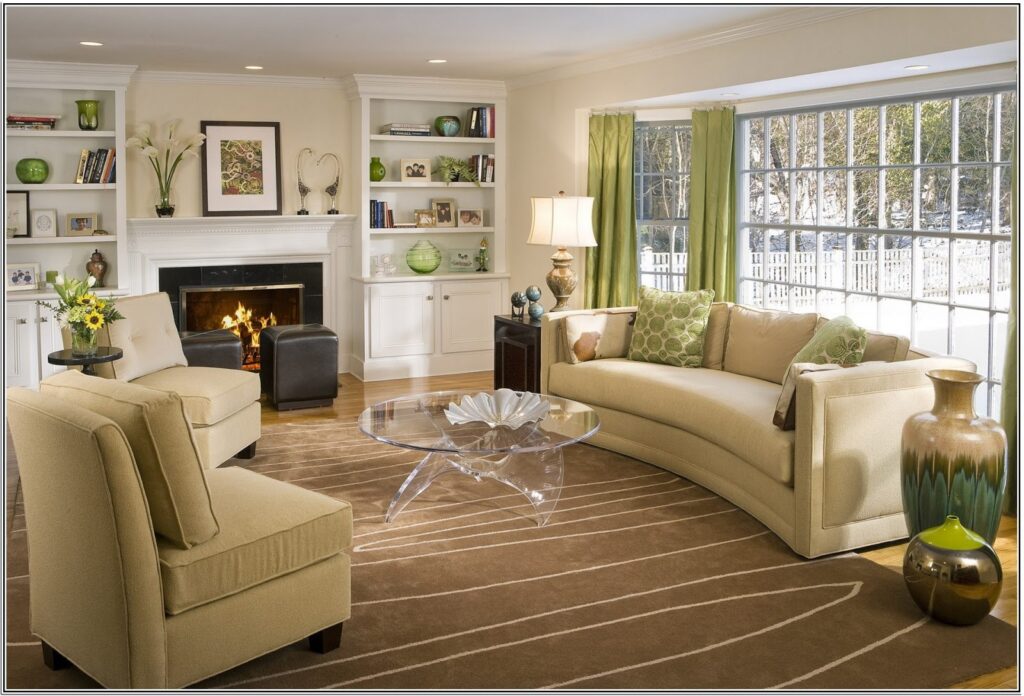
- Flat/Matte: This finish has the least amount of sheen and provides excellent coverage, hiding imperfections well. It’s best suited for low-traffic areas like ceilings and formal living rooms.
- Eggshell: Eggshell finish has a slight sheen, making it more durable and easier to clean than matte. It’s a popular choice for living rooms, bedrooms, and dining rooms.
- Satin: Satin finish has a more noticeable sheen than eggshell and is even more durable and washable. It’s a good option for hallways, children’s rooms, and bathrooms.
- Semi-Gloss: Semi-gloss finish is highly durable and washable, making it ideal for kitchens, bathrooms, and trim. It’s also resistant to moisture and mildew.
- High-Gloss: High-gloss finish is the most durable and easiest to clean, but it also reflects the most light, highlighting any imperfections. It’s typically used for trim, doors, and cabinets.
Trending Interior Paint Ideas: Inspiration for Every Style
Now that you understand the basics of color psychology and paint finishes, let’s explore some trending interior paint ideas to spark your creativity:
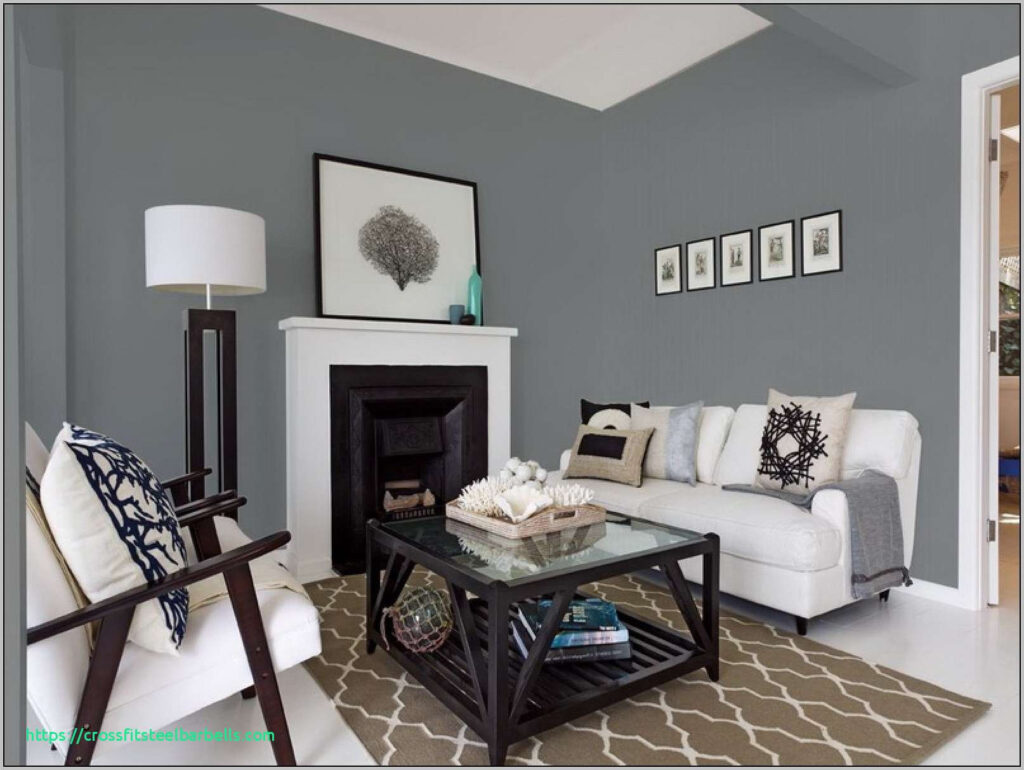
Earthy Tones: Bringing the Outdoors In
Earthy tones, such as warm browns, terracotta, olive green, and muted yellows, are gaining popularity as people seek to create a connection with nature in their homes. These colors evoke feelings of grounding, stability, and tranquility. Pair them with natural materials like wood, stone, and woven textiles to enhance the organic feel. Think of a living room painted in a warm terracotta hue, accented with wooden furniture and earthy-toned textiles. Imagine the scent of pine and damp earth filling your home. This creates a grounded and calm feeling to your space.
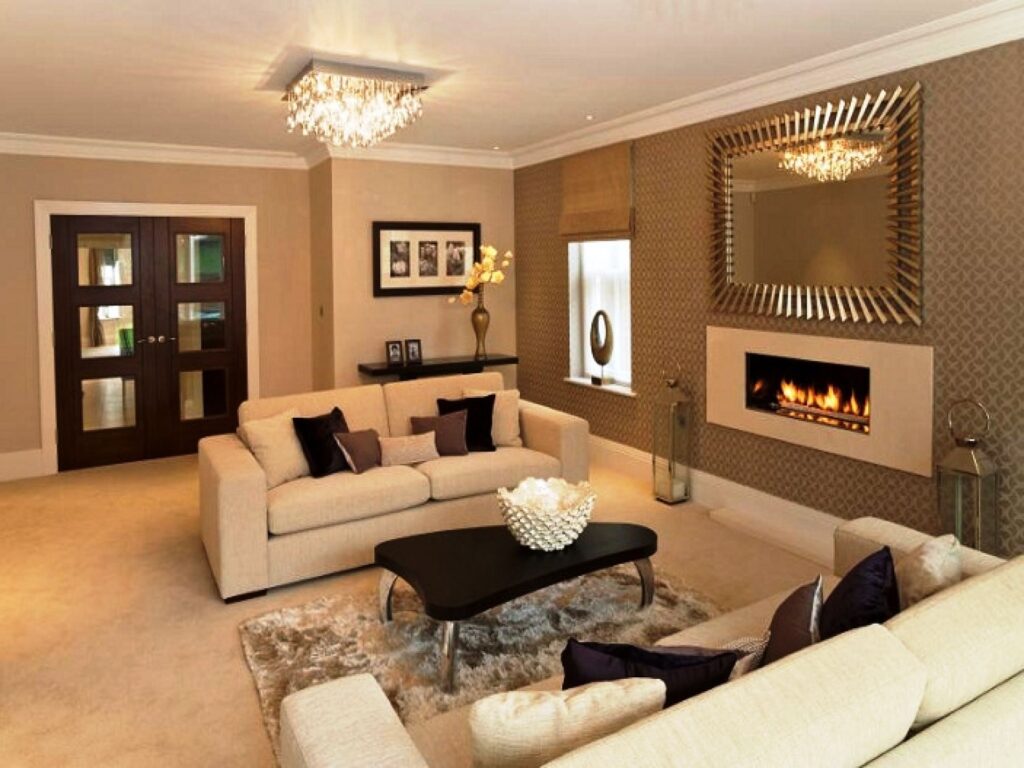
Bold Jewel Tones: Adding Drama and Luxury
Jewel tones, like emerald green, sapphire blue, ruby red, and amethyst purple, are perfect for adding a touch of drama and luxury to your space. These rich and saturated colors can create a sense of opulence and sophistication. Use them sparingly as accent colors or go bold and paint an entire room for a dramatic statement. A deep emerald green accent wall in a dining room or a sapphire blue velvet sofa in a living room can instantly elevate the look of your home. Consider the light and how it will reflect from the surface to enhance the feeling of luxury.
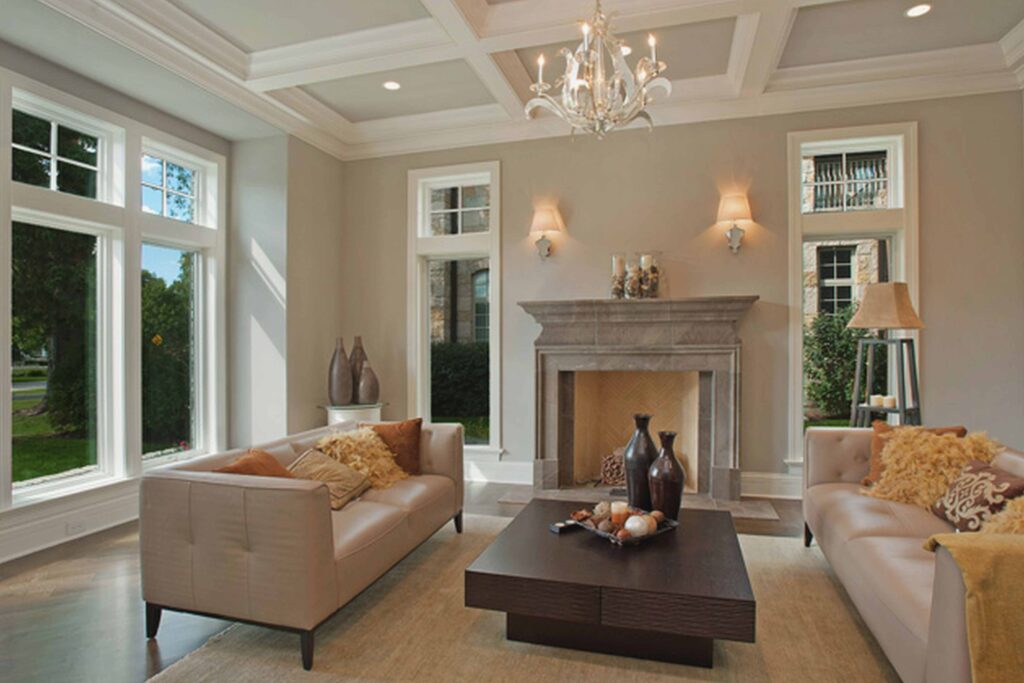
Monochromatic Schemes: Creating a Cohesive Look
A monochromatic color scheme involves using different shades and tints of a single color to create a cohesive and harmonious look. This approach is perfect for creating a sense of calm and sophistication. Choose your favorite color and experiment with different variations to add depth and interest to your space. A gray monochromatic bedroom with light gray walls, charcoal gray bedding, and silver accents can create a serene and elegant retreat. Consider adding textures to create some difference within your monochromatic room.
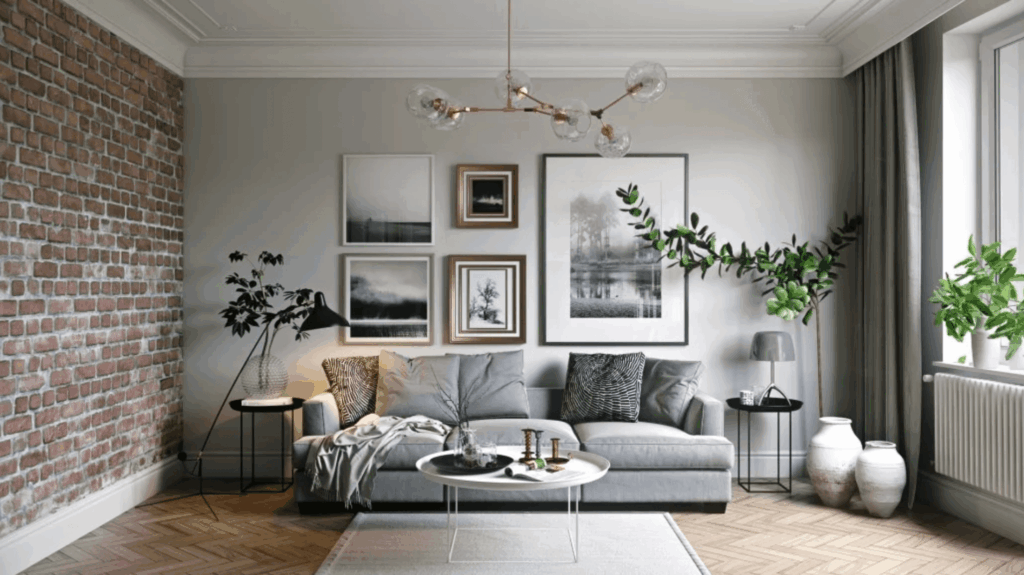
Two-Tone Walls: Adding Visual Interest
Painting your walls in two different colors can add visual interest and create a unique focal point. You can divide the wall horizontally, vertically, or even create geometric patterns. Consider using a lighter color on the top half of the wall and a darker color on the bottom half to create a sense of balance. Or, paint a single accent wall in a bold color to draw attention to a specific feature. A light blue top half with a white bottom half creates an airy atmosphere, while a dark grey accent wall with light walls can create a dramatic effect.
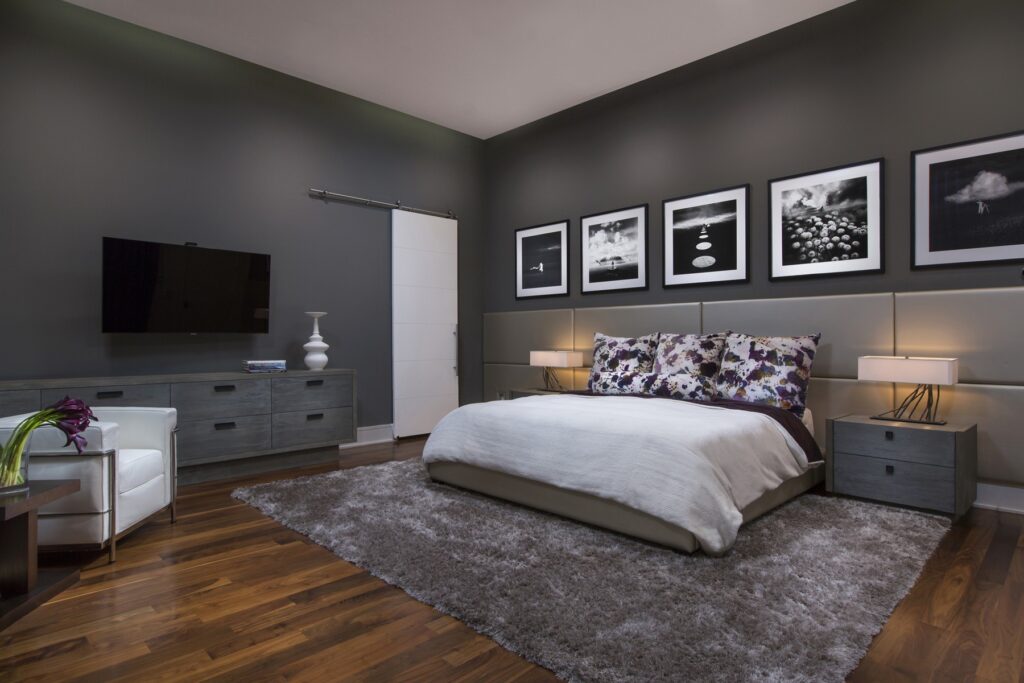
Ombre Walls: A Gradient of Color
Ombre walls create a stunning visual effect by gradually blending one color into another. This technique is perfect for adding depth and dimension to a room. Choose two or three colors that complement each other and blend them seamlessly using a sponge or brush. An ombre wall can be a beautiful backdrop for a bedroom, living room, or even a nursery. Imagine a light pink fading into a soft white, creating a dreamy and romantic atmosphere.
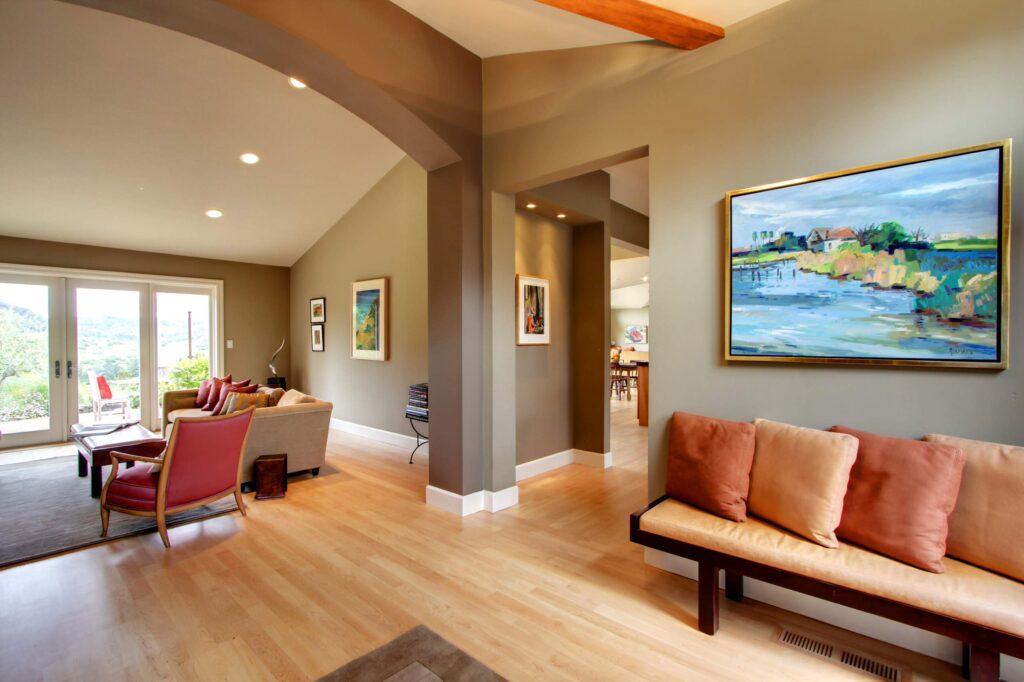
Geometric Patterns: Adding a Modern Touch
Geometric patterns, such as stripes, triangles, and hexagons, can add a modern and playful touch to your walls. Use painter’s tape to create clean lines and experiment with different color combinations to create a unique and eye-catching design. A geometric pattern can be a great way to add personality to a children’s room, a home office, or even a hallway. A black and white striped wall can create a bold statement, while a pastel triangle pattern can create a fun and whimsical vibe.
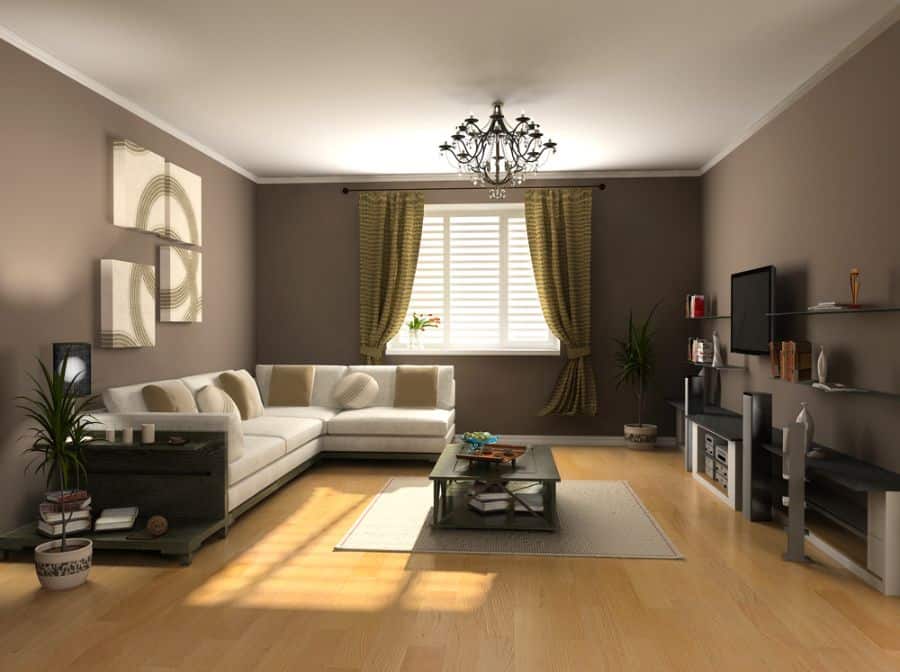
Color Blocking: Bold and Graphic
Color blocking involves using large blocks of contrasting colors to create a bold and graphic design. This technique is perfect for adding energy and visual interest to a room. Use painter’s tape to create clean lines and experiment with different color combinations to create a unique and impactful design. A color-blocked wall can be a great way to add personality to a living room, dining room, or even a bedroom. Combining mustard yellow, teal and blush pink can create a vibrant and modern space.
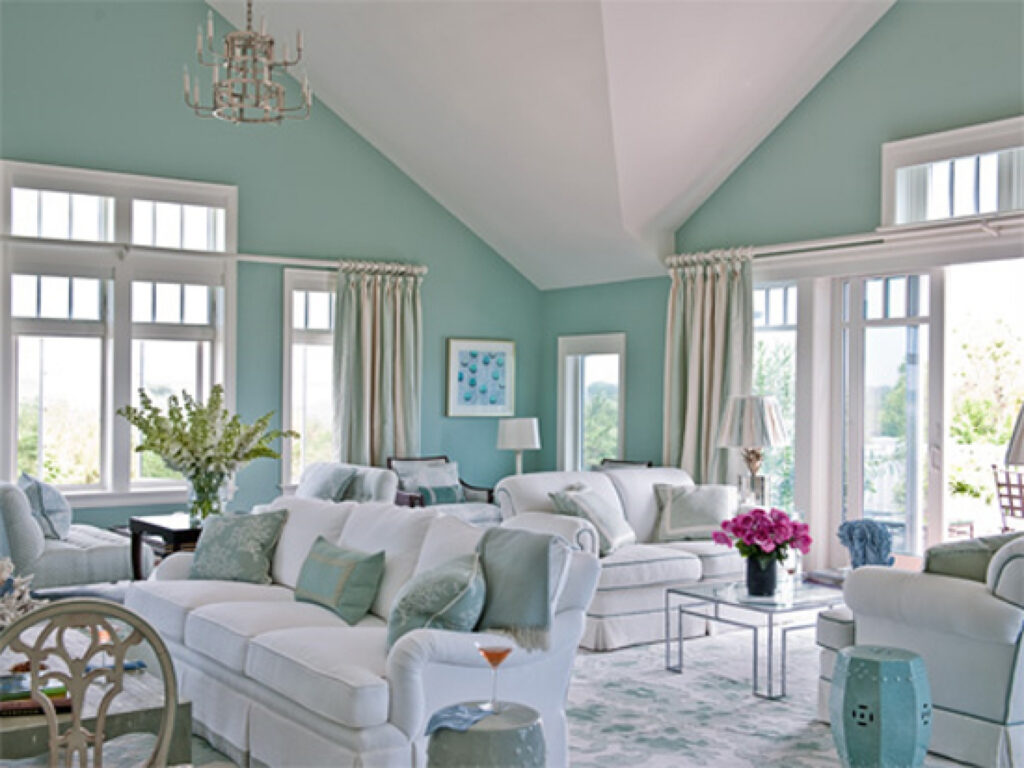
Accent Walls: Highlighting Key Features
An accent wall is a great way to add a pop of color and highlight a specific feature in your room. Choose a wall that you want to draw attention to, such as the wall behind your bed, sofa, or fireplace, and paint it in a contrasting color. This technique can create a focal point and add depth to the space. A dark blue accent wall behind a white sofa can create a dramatic and sophisticated look, while a bright yellow accent wall in a dining room can add a touch of fun and energy.
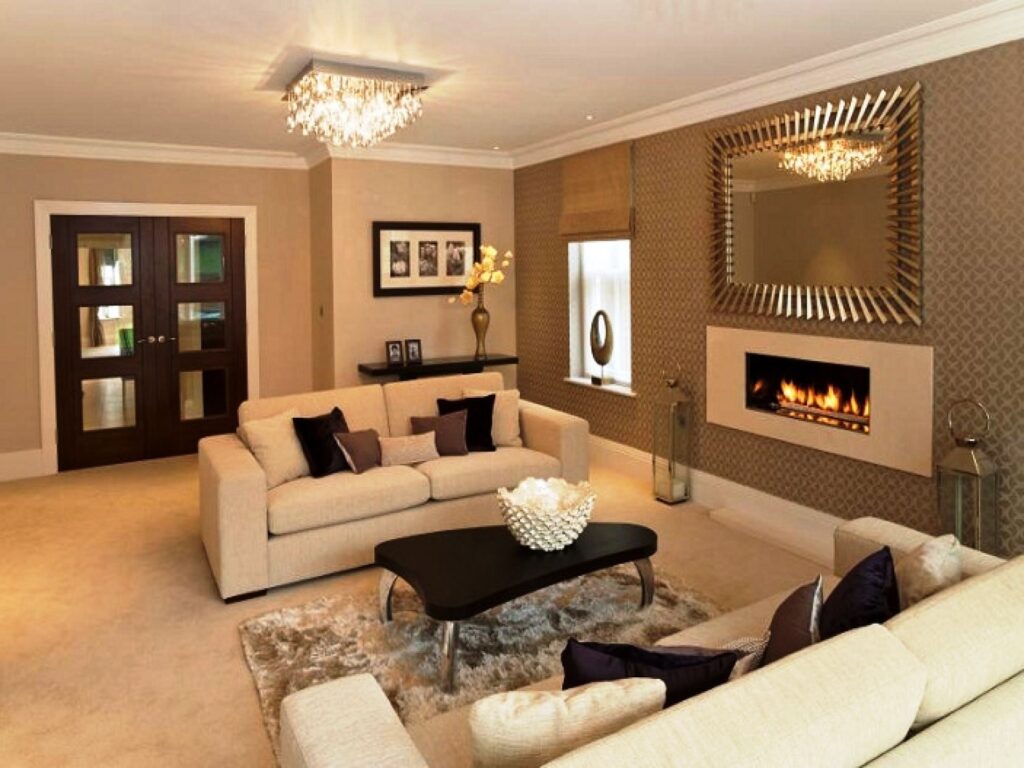
Textured Paint: Adding Depth and Dimension
Textured paint can add depth and dimension to your walls, creating a unique and tactile effect. There are various textured paint techniques available, such as stippling, sponging, and rag rolling, each creating a different look. Experiment with different techniques and colors to find the perfect texture for your space. Textured paint can be a great way to add character to a living room, dining room, or even a bedroom. A stippled wall can create a subtle and elegant effect, while a rag-rolled wall can create a more rustic and organic feel. Venetian plaster is another option that gives a textured look to any room.
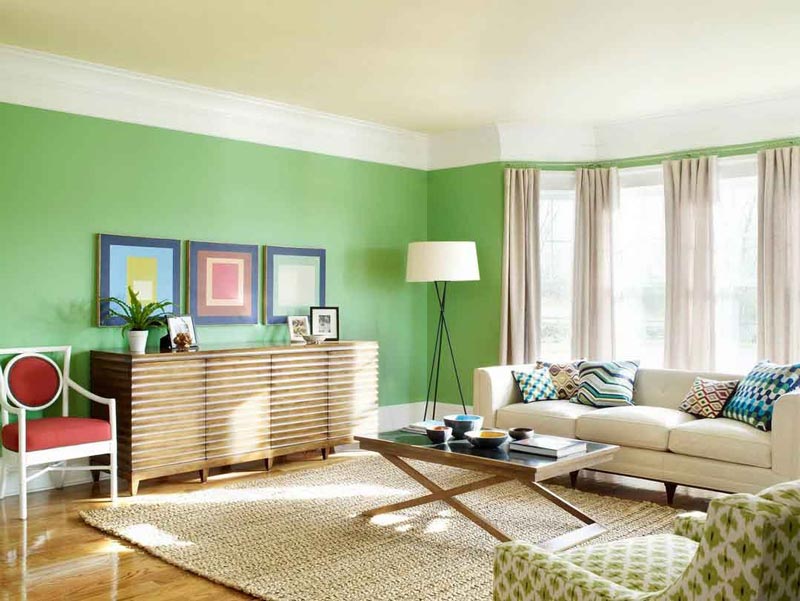
Stencils: Adding Intricate Designs
Stencils can be used to add intricate designs and patterns to your walls, creating a unique and personalized look. Choose a stencil design that complements your existing décor and use painter’s tape to secure it to the wall. Apply paint using a stencil brush or sponge and carefully remove the stencil. Stencils can be a great way to add personality to a children’s room, a home office, or even a hallway. A floral stencil pattern can create a romantic and feminine vibe, while a geometric stencil pattern can create a modern and sophisticated look.
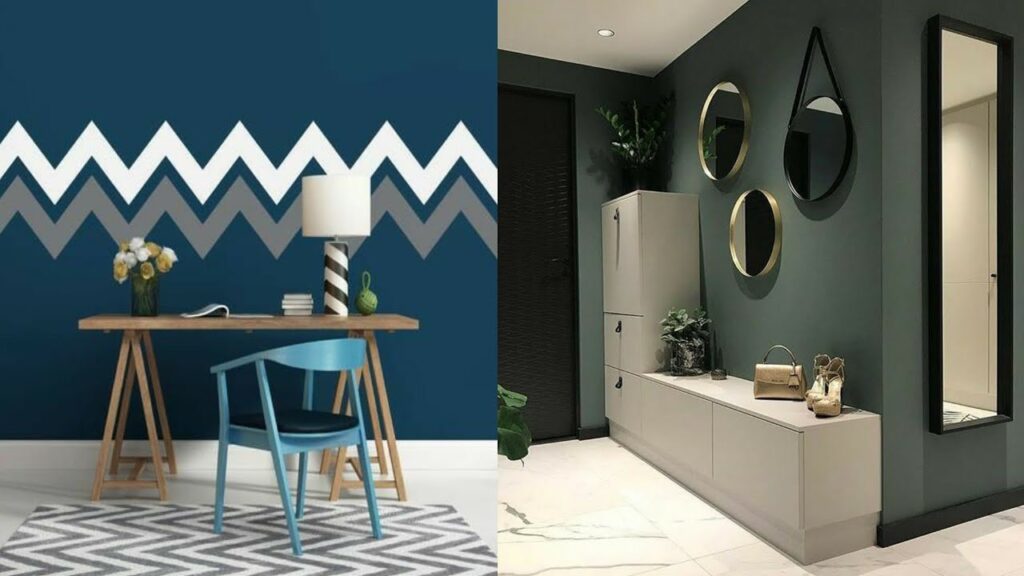
Preparing Your Walls for Painting: A Crucial Step
No matter how beautiful your paint color is, a poorly prepared surface will result in a less-than-desirable finish. Proper preparation is essential for achieving a smooth, long-lasting, and professional-looking paint job.
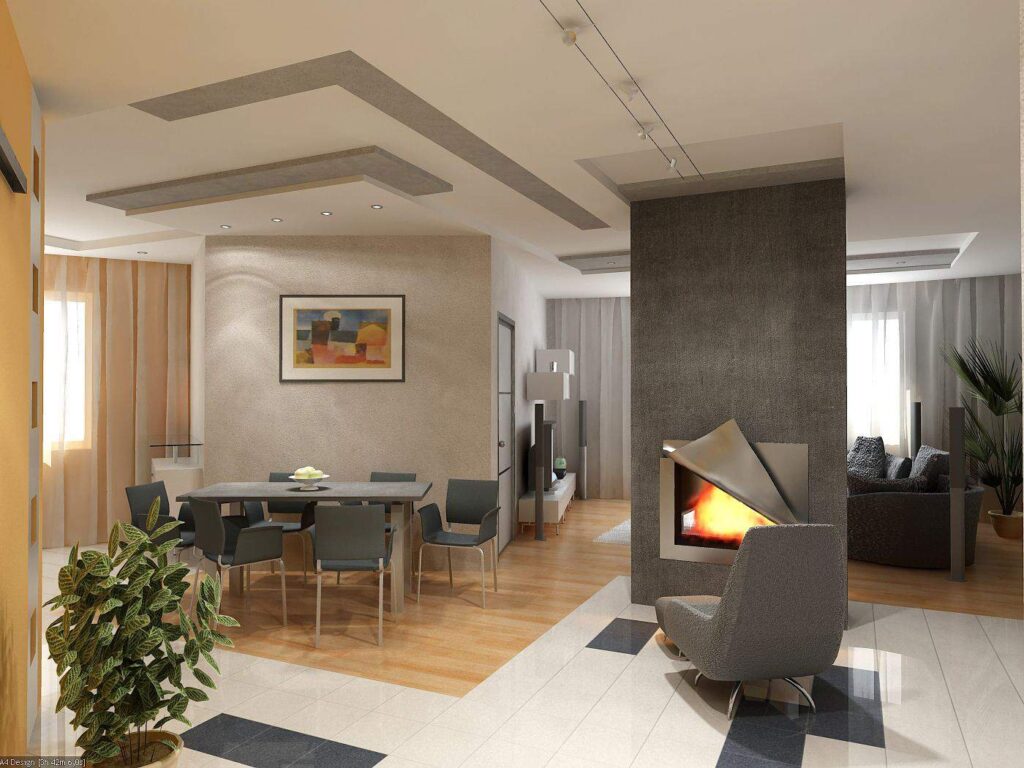
- Cleaning: Start by thoroughly cleaning your walls to remove any dirt, dust, grease, or mildew. Use a mild detergent and warm water to wash the walls, then rinse with clean water and allow them to dry completely.
- Repairing: Fill any holes, cracks, or imperfections with spackle or joint compound. Allow the filler to dry completely, then sand it smooth with fine-grit sandpaper.
- Priming: Apply a coat of primer to your walls to create a smooth, even surface for the paint to adhere to. Primer also helps to block stains and prevent bleed-through. Choose a primer that is appropriate for your wall type and the paint you will be using.
- Taping: Use painter’s tape to protect trim, windows, doors, and other surfaces that you don’t want to paint.
Choosing the Right Tools and Supplies: Setting Yourself Up for Success
Having the right tools and supplies will make your painting project much easier and more efficient. Here’s a list of essential items you’ll need:
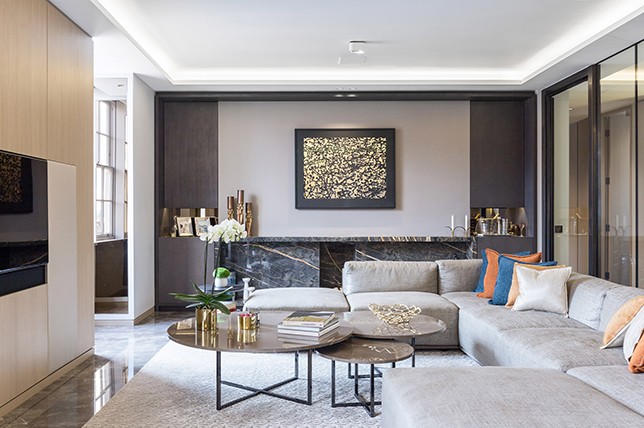
- Paintbrushes: Choose high-quality paintbrushes in various sizes for different tasks.
- Paint Rollers: Use paint rollers for covering large areas quickly and efficiently.
- Paint Trays: Use paint trays to hold the paint while you’re working.
- Painter’s Tape: Use painter’s tape to protect trim, windows, doors, and other surfaces.
- Drop Cloths: Use drop cloths to protect your floors and furniture from paint splatters.
- Spackle or Joint Compound: Use spackle or joint compound to fill holes and cracks.
- Sandpaper: Use sandpaper to smooth out imperfections.
- Primer: Apply a coat of primer to your walls before painting.
- Paint: Choose high-quality interior paint in your desired colors and finishes.
DIY Painting Tips: Achieving a Professional Finish
With the right preparation, tools, and techniques, you can achieve a professional-looking paint job yourself. Here are some helpful DIY painting tips:
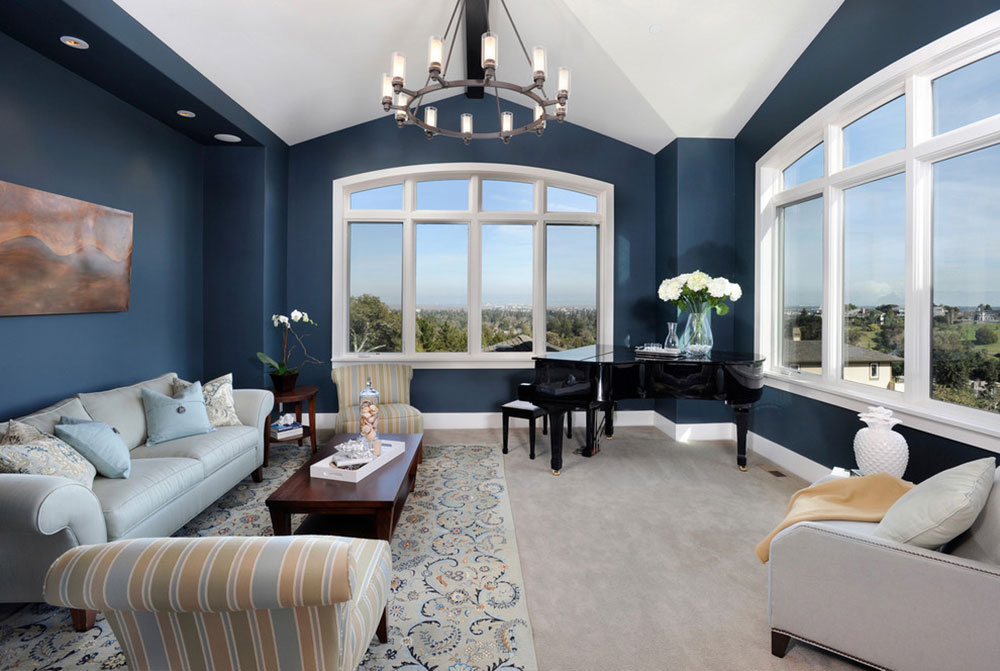
- Start with the Ceiling: Paint the ceiling first to avoid drips and splatters on your freshly painted walls.
- Cut in the Edges: Use a paintbrush to “cut in” the edges of the walls, around trim, and in corners before rolling.
- Roll in a “W” Pattern: Roll the paint onto the walls in a “W” pattern to ensure even coverage.
- Overlap Each Stroke: Overlap each stroke slightly to avoid streaks and ensure a smooth finish.
- Apply Two Coats: Apply two coats of paint for best coverage and durability.
- Allow Paint to Dry Completely: Allow the paint to dry completely between coats.
- Clean Your Tools Immediately: Clean your paintbrushes and rollers immediately after use to prevent the paint from drying and ruining them.
Beyond Color: Incorporating Texture and Special Effects
While color is a crucial element, don’t underestimate the impact of texture and special effects. Techniques like faux finishes, stenciling, and wallpaper can add depth and personality to your walls.
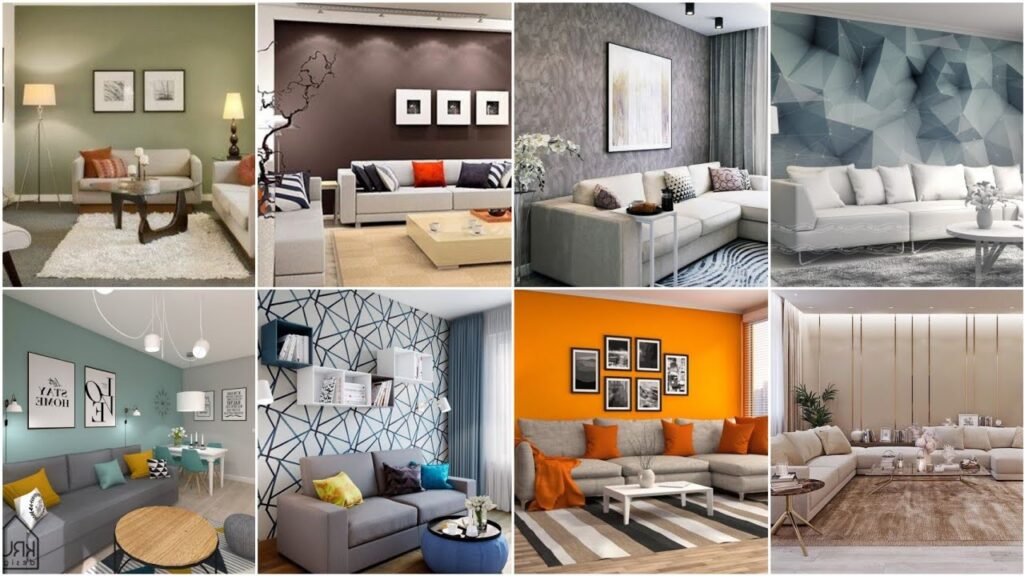
- Faux Finishes: Techniques like sponging, rag rolling, and stippling can create unique textured effects that mimic the look of natural materials like stone, wood, or marble.
- Stenciling: Stencils allow you to add intricate patterns and designs to your walls, from delicate floral motifs to bold geometric shapes.
- Wallpaper: Wallpaper is back in a big way, offering a wide range of patterns, textures, and colors to choose from. Consider using wallpaper on an accent wall or in a smaller space like a powder room.
Common Painting Mistakes to Avoid
Even with careful planning and preparation, it’s easy to make mistakes when painting. Here are some common pitfalls to avoid:
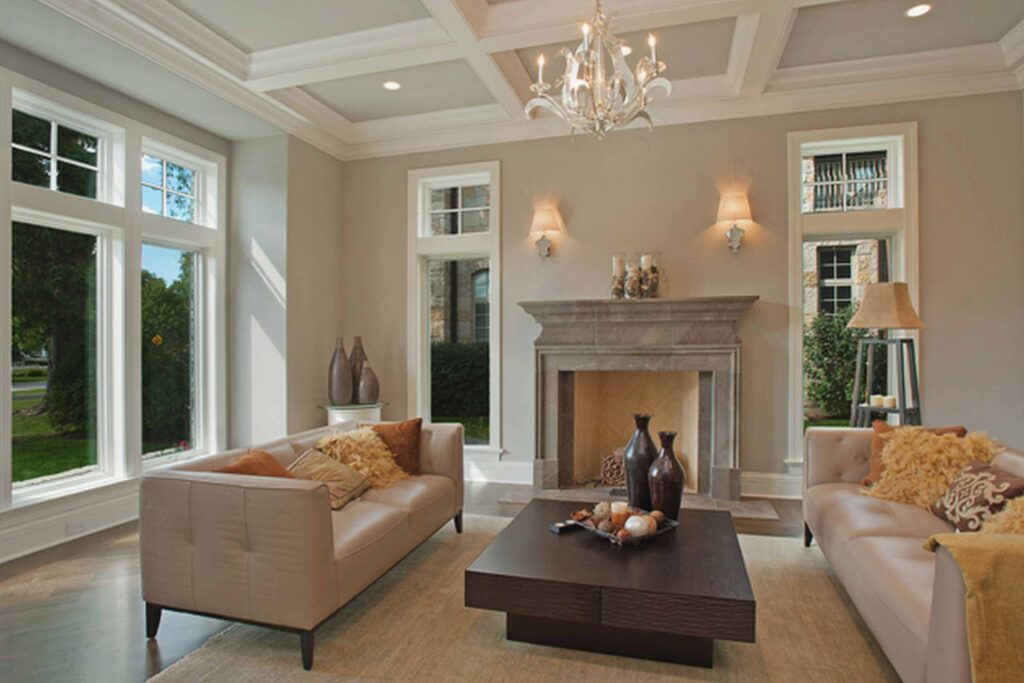
- Skipping Preparation: As mentioned earlier, proper preparation is crucial. Don’t skip cleaning, repairing, or priming.
- Using the Wrong Paint Finish: Choosing the wrong paint finish can affect the durability and appearance of your walls.
- Applying Paint Too Thinly: Applying paint too thinly can result in poor coverage and require multiple coats.
- Not Allowing Paint to Dry Completely: Not allowing paint to dry completely between coats can lead to bubbling and peeling.
- Using Dirty Tools: Using dirty paintbrushes and rollers can contaminate the paint and create a streaky finish.
Lighting Considerations: How Light Affects Color
The way light interacts with color can significantly impact the overall look and feel of a room. Consider the amount of natural light a room receives, as well as the type of artificial lighting used.
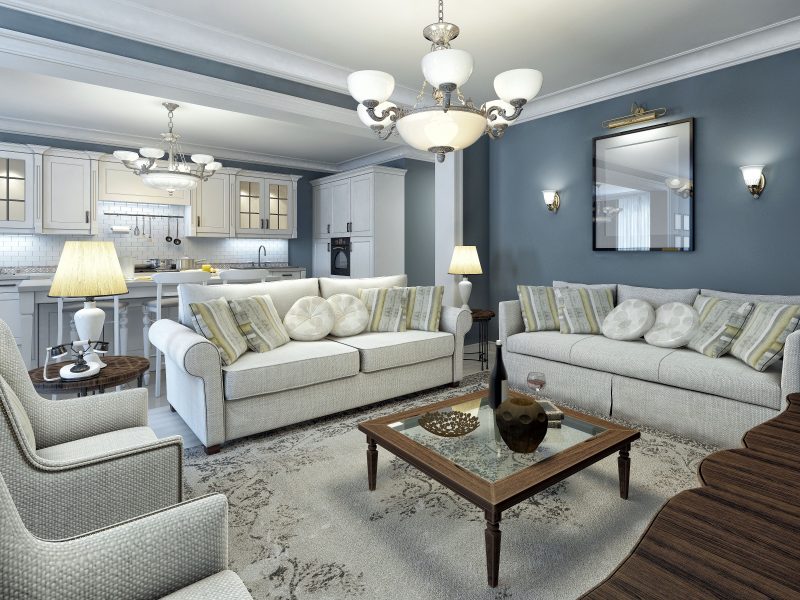
- Natural Light: Natural light tends to make colors appear brighter and more vibrant.
- Artificial Light: Incandescent lighting tends to warm up colors, while fluorescent lighting can cool them down.
- Consider Sheen: Higher sheen paints reflect more light, making them appear brighter, while matte finishes absorb light, making colors appear richer and deeper.
Sustainable Painting Practices: Eco-Friendly Options
As environmental awareness grows, more homeowners are seeking sustainable painting options. Look for low-VOC (volatile organic compounds) or zero-VOC paints, which release fewer harmful chemicals into the air. Consider using recycled paint or donating leftover paint to a local charity.
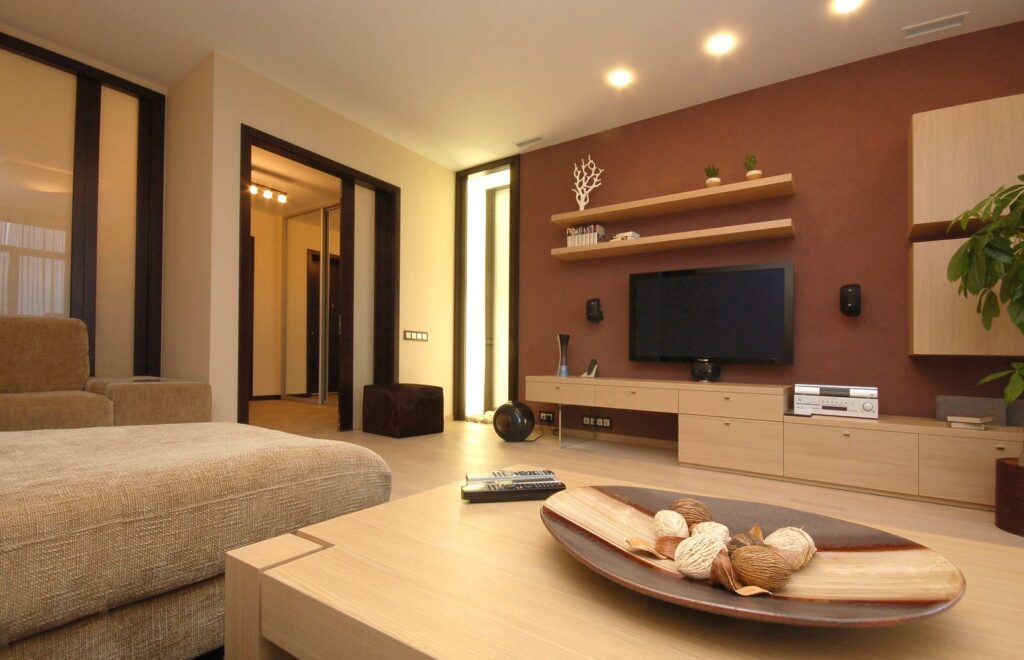
Interior Paint Ideas: Room by Room Inspiration
Living Room
Create a welcoming and inviting atmosphere with warm neutrals, earthy tones, or bold jewel tones. Consider an accent wall to highlight a fireplace or entertainment center.
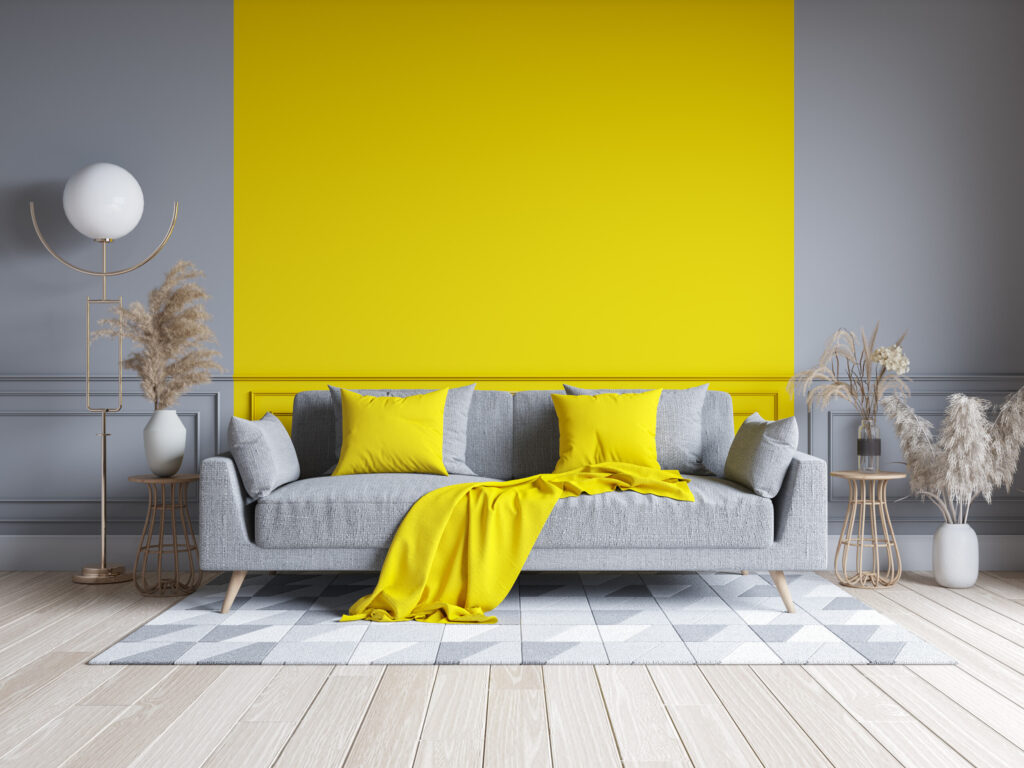
Bedroom
Promote relaxation and tranquility with cool colors like blue, green, or lavender. Opt for a matte or eggshell finish for a soft and serene look.
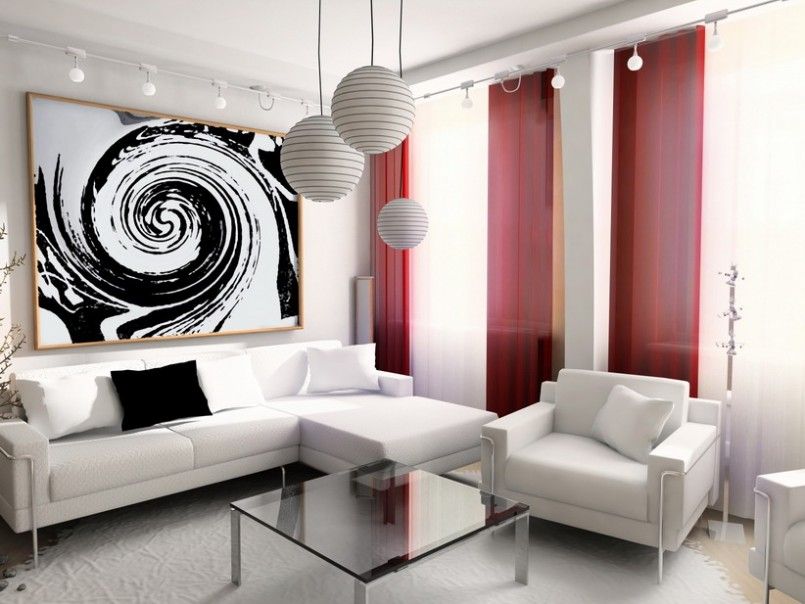
Kitchen
Choose durable and washable paint finishes like satin or semi-gloss. Bright and cheerful colors like yellow or white can create a vibrant and energetic space.
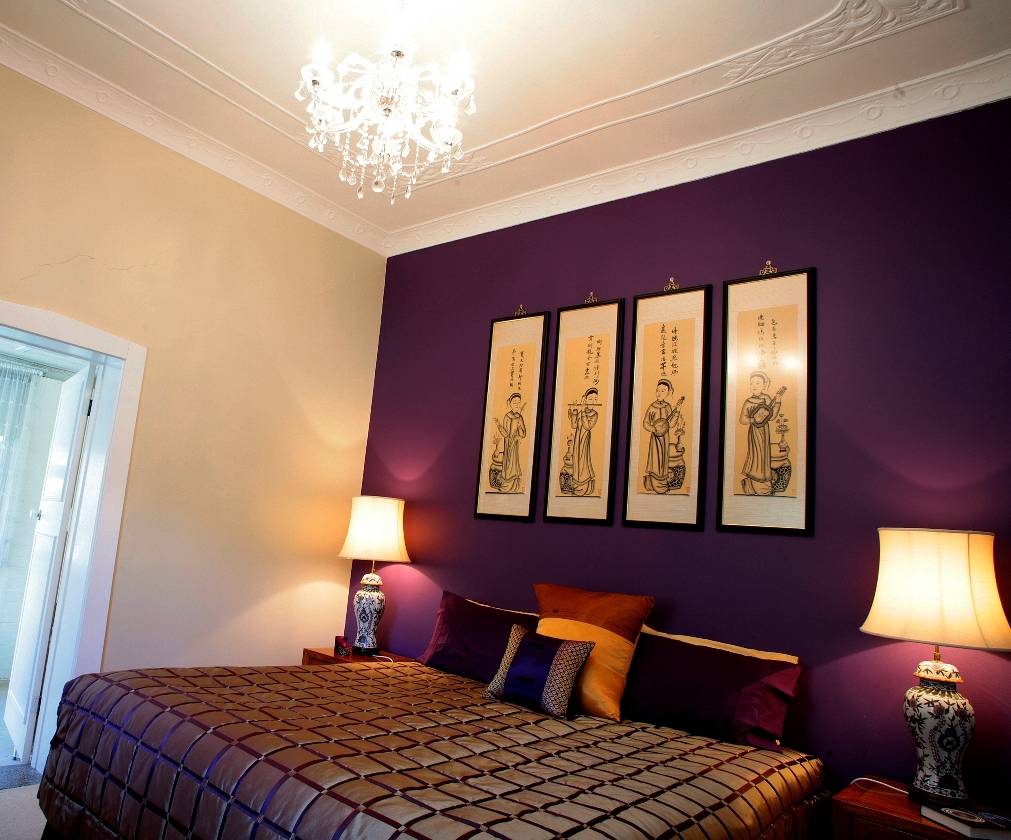
Bathroom
Select moisture-resistant paint finishes like semi-gloss or high-gloss. Light and airy colors like blue, green, or white can create a spa-like atmosphere.
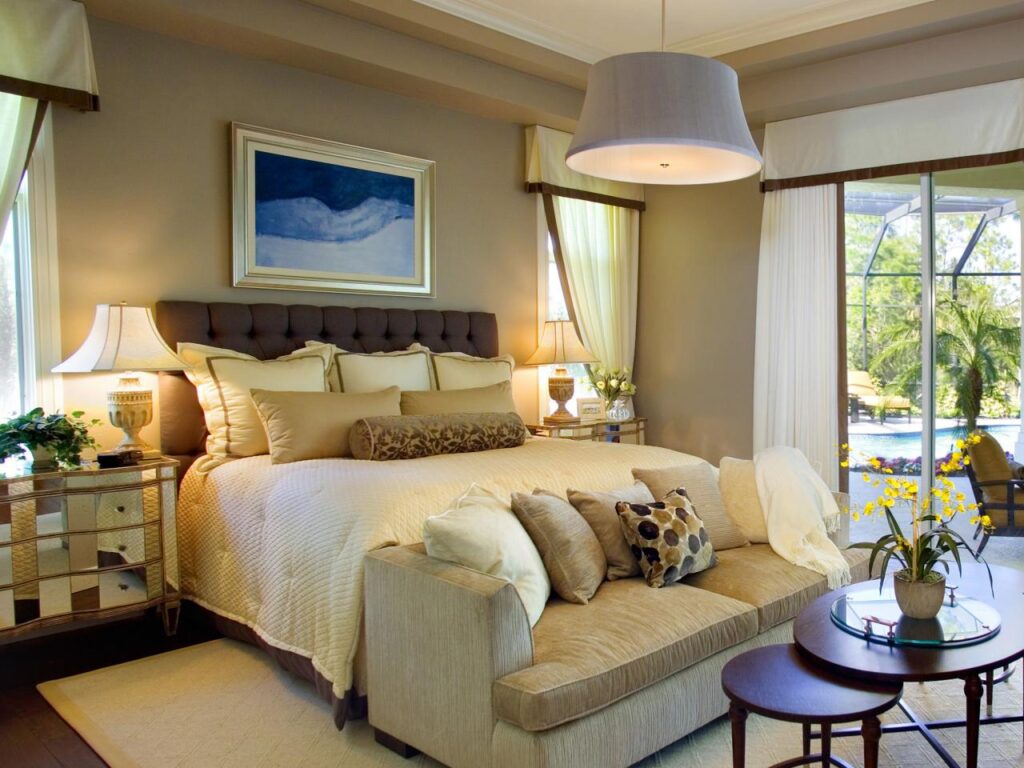
Dining Room
Create a sophisticated and elegant atmosphere with rich colors like deep red, burgundy, or navy blue. Consider a two-tone wall or a textured paint finish for added visual interest.
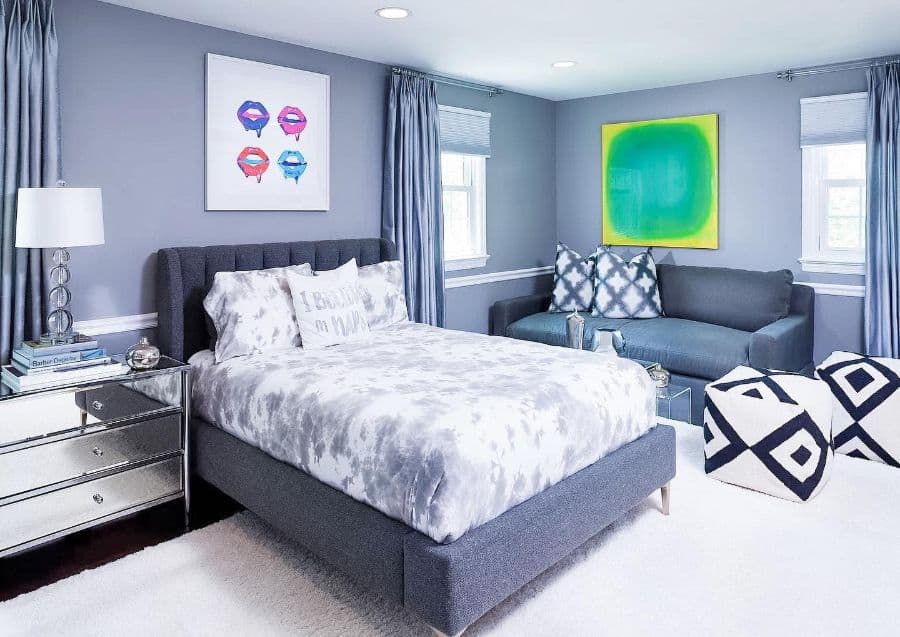
Home Office
Promote focus and productivity with cool and calming colors like blue, green, or gray. Opt for a matte finish to reduce glare.
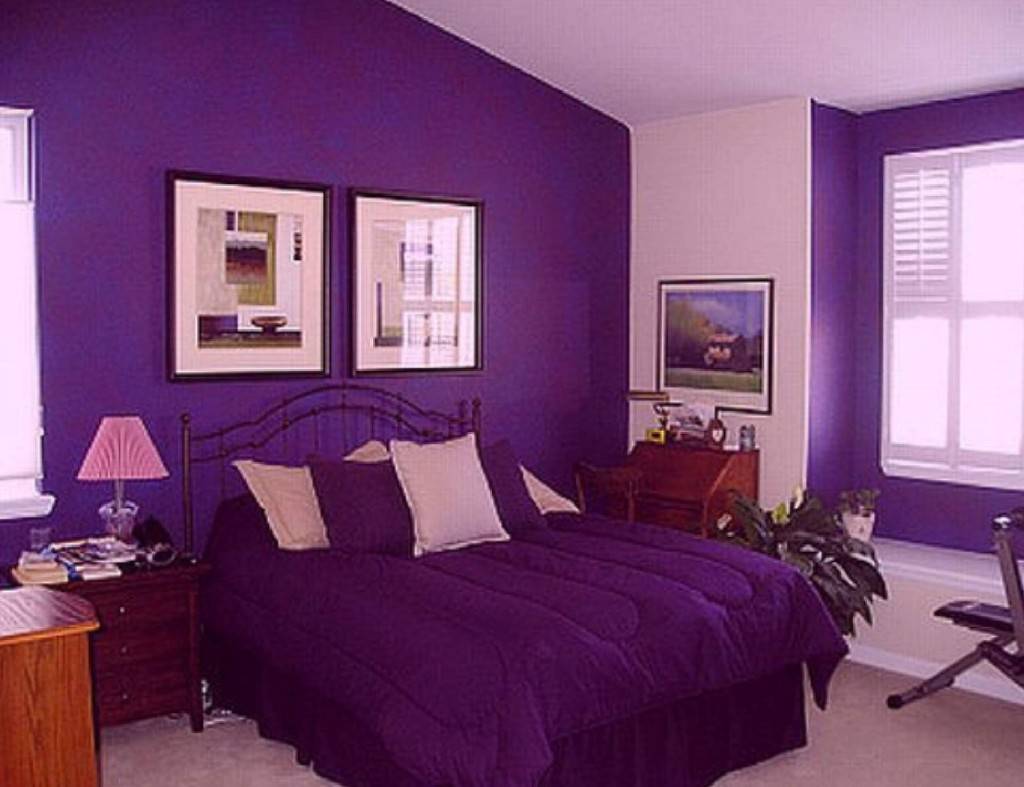
Final Thoughts: Creating a Home You Love
Painting your home is a personal and creative process. Don’t be afraid to experiment with different colors, techniques, and styles to create a space that reflects your unique personality and taste. With careful planning, preparation, and a little bit of effort, you can transform your home into a beautiful and inviting sanctuary that you’ll love for years to come. Remember to have fun, express yourself, and enjoy the process of creating a home that truly feels like you. Don’t be afraid to go with what you like and not only what is trending; after all, you are the one living there, not the trendsetters!
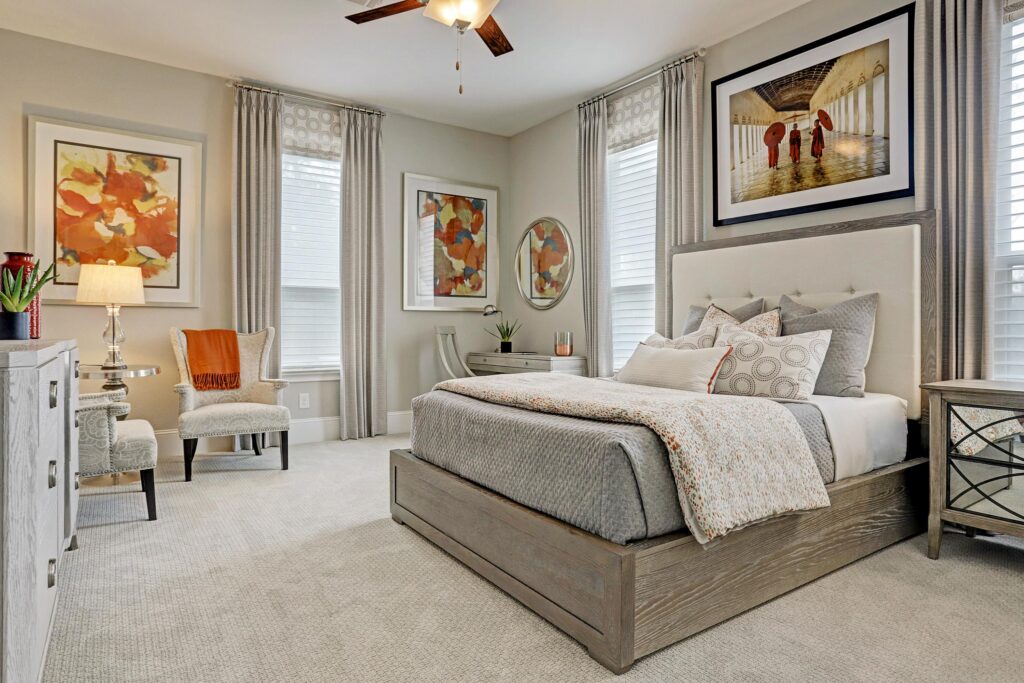
 Nimila
Nimila
